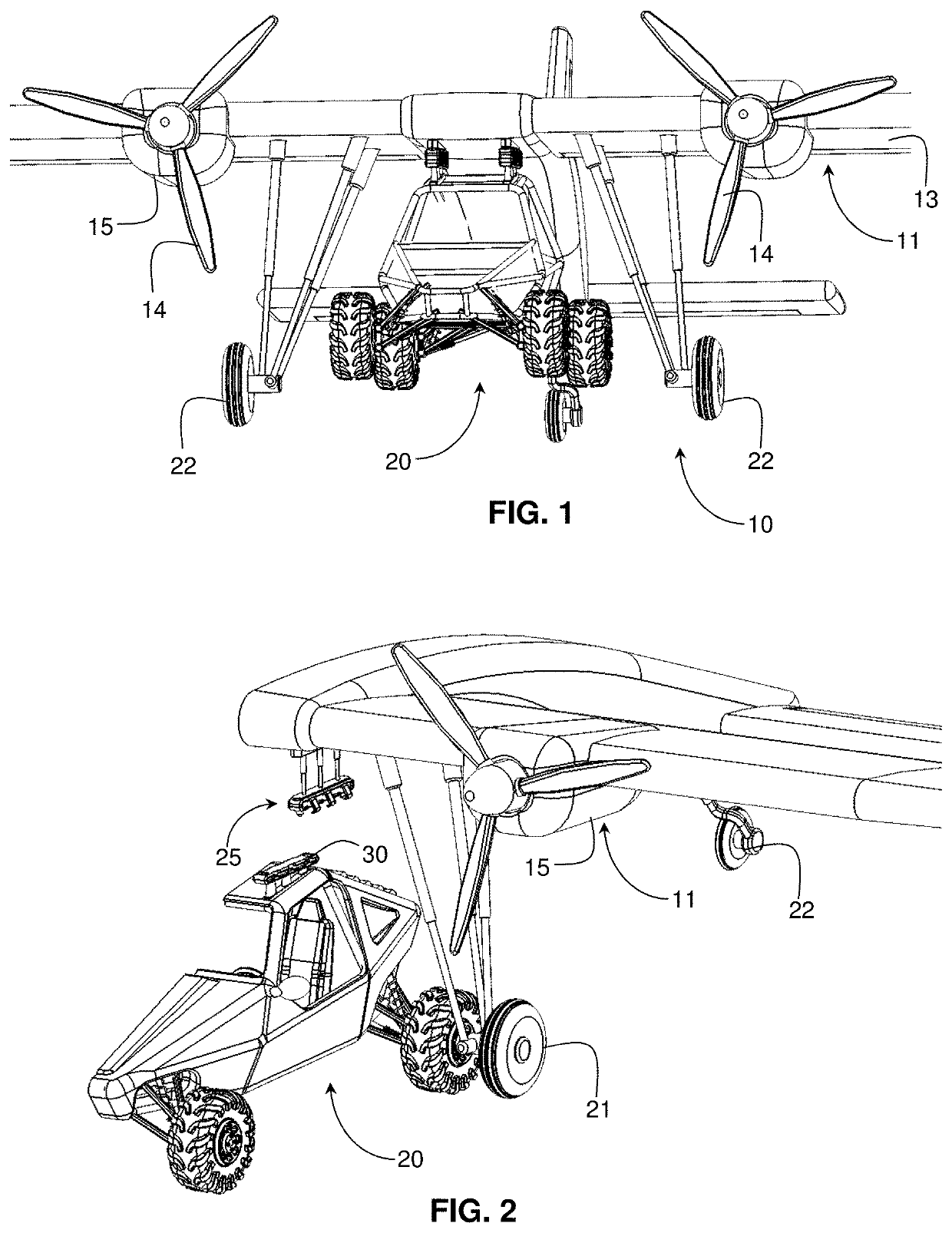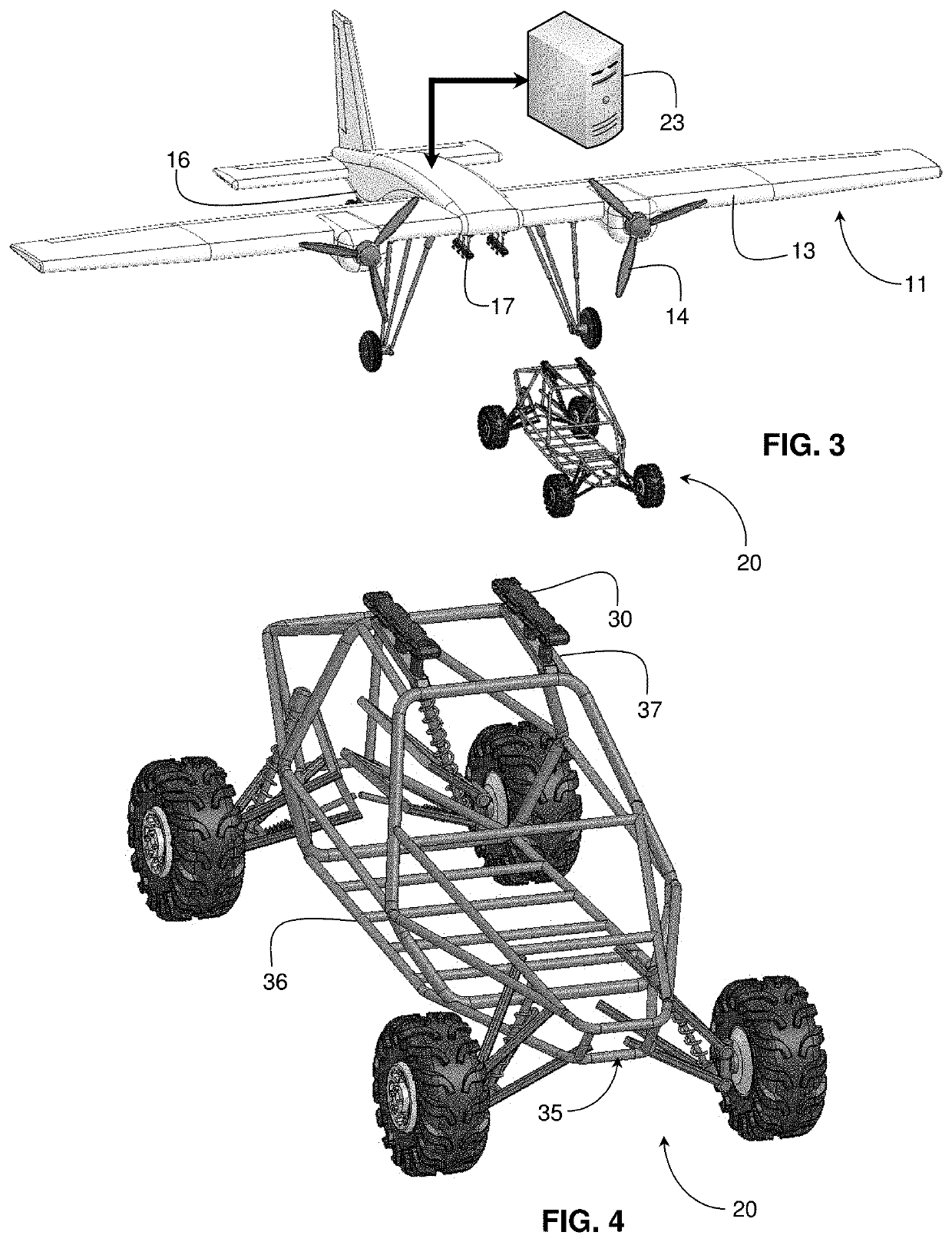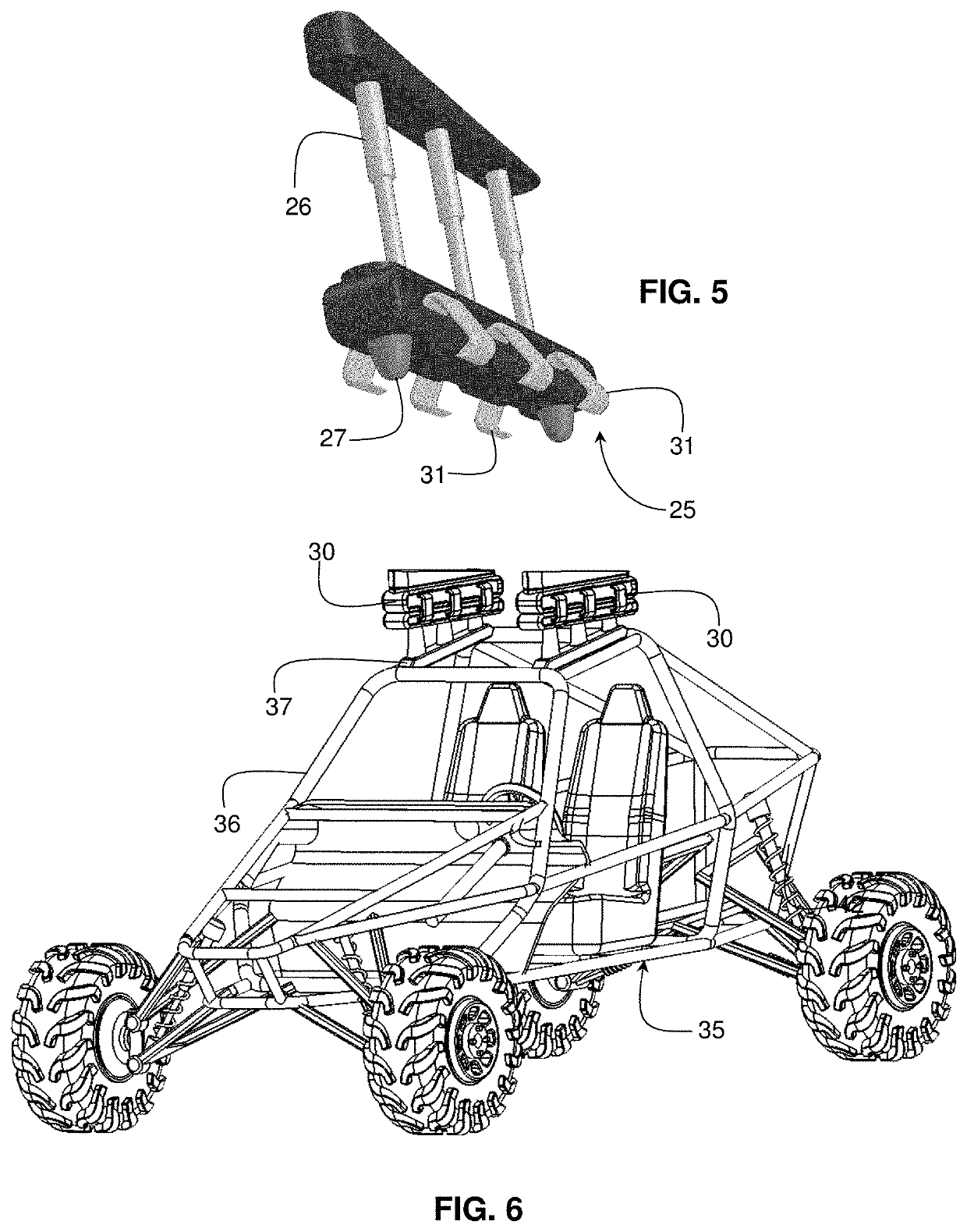Universal flying terrain vehicle
a terrain vehicle and universal technology, applied in the field of flying cars, can solve the problems of not being well-suited for road handling, not being able to convert the owner's terrain vehicle into an airplane, and being unable to adapt to the road handling of the vehicle,
- Summary
- Abstract
- Description
- Claims
- Application Information
AI Technical Summary
Benefits of technology
Problems solved by technology
Method used
Image
Examples
first embodiment
[0034]FIG. 1 shows a flying vehicle 10 including an aerial platform 11 supporting wings 13, propellers 14 driven by a suitable thruster 15 coupled to a fuel supply shown schematically as 16. The aerial platform 11 also has a coupling mechanism 17 for coupling to a terrain vehicle 20. FIG. 2 shows a partial sectional view of the terrain vehicle 20 disengaged from the aerial platform 11.
[0035]The aerial platform 11 supports engines to create thrust, wings to create lift, control surfaces such as ailerons, rudder and height controls, an array of three undercarriages (primary and secondary landing gear having nose or tail wheels 21 and secondary wheels 22, respectively) to transport the weight during aircraft takeoff and landing, a servo control for the aircraft control surfaces and for the primary landing gear. The aerial platform 11 also has a chassis that is sufficiently massive to carry the combined weight of the aerial platform and the terrain vehicle and means for anchoring the t...
second embodiment
[0038]FIGS. 7 to 10 show a flying car 40 wherein the terrain vehicle 20 is coupled to a rotate wing aerial platform 41. The aerial platform 41 supports propellers 14 driven by a thruster 15 powered by a battery (constituting a fuel supply). The aerial platform 11 has latching mechanisms 25 as shown in FIG. 5 for coupling to a terrain vehicle 20. Also attached to the aerial platform 11 are adjustable legs 42 that serve as landing gear and each of which comprises at least two telescopic elements 43 that can be extended from an initial collapsed position shown in FIG. 7 during flight to an extended position shown in FIG. 9 on landing. Upon landing, the telescopic elements 43 are extended until the terrain vehicle 20 is lifted off the ground. The latch mechanisms 25 are then lowered via the pistons 26 so as to lower the vehicle to the ground and the clasps 31 are released in preparation for a ground phase.
third embodiment
[0039]FIGS. 11a and 11b show respectively pictorial front elevation and lower plan views of an aerial platform 11 in the form of a parafoil-wing airplane prior to engagement of the terrain vehicle, which for clarity is not shown in the figures. The aerial platform 11 supports propellers 14 driven by a suitable thruster coupled to a fuel supply neither of which is shown in the drawings. The lift element is a parafoil 50 that is attached to the aerial platform 11 via tethers 51 in known manner. Coupling elements 17 are supported on an underside of the aerial platform 11 and operate as described above for engaging mating connectors mounted on the roof of the terrain vehicle.
[0040]The construction according to the invention also facilitates a business model whereby any motorist with a suitably modified terrain vehicle can hire an aerial platform to fly them out from an initial takeoff location to a landing site, where they can return the aerial platform and continue on their way by roa...
PUM
 Login to View More
Login to View More Abstract
Description
Claims
Application Information
 Login to View More
Login to View More - R&D
- Intellectual Property
- Life Sciences
- Materials
- Tech Scout
- Unparalleled Data Quality
- Higher Quality Content
- 60% Fewer Hallucinations
Browse by: Latest US Patents, China's latest patents, Technical Efficacy Thesaurus, Application Domain, Technology Topic, Popular Technical Reports.
© 2025 PatSnap. All rights reserved.Legal|Privacy policy|Modern Slavery Act Transparency Statement|Sitemap|About US| Contact US: help@patsnap.com



